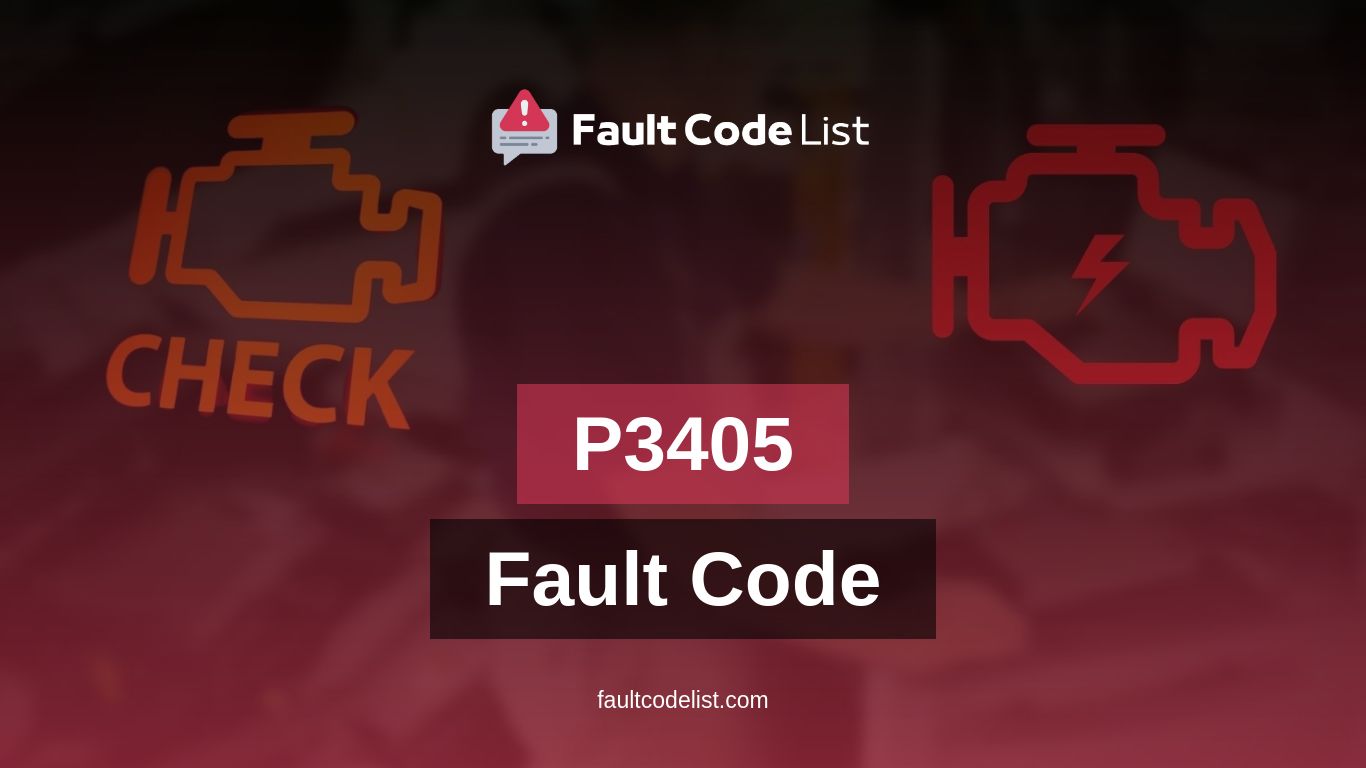The P3405 fault code is a common engine malfunction code that appears in many cars. This code indicates a problem with the cylinder deactivation system in the engine, which means that one or more cylinders are not deactivating when they should.
Cylinder 1 Exhaust Valve Control Circuit/Open

Causes of the P3405 Fault Code
- Malfunctioning or faulty cylinder deactivation solenoid
- Damaged wiring or electrical connections related to the solenoid
- Low engine oil pressure
- Faulty engine oil pump
- Issues with the engine control module (ECM)
The P3405 code is often caused by a malfunctioning or faulty cylinder deactivation solenoid. When this solenoid doesn’t work properly, it can cause the engine to run on all cylinders instead of just a few, which can lead to decreased fuel economy and increased emissions.
In addition, damaged wiring or electrical connections related to the solenoid can also cause this error code to appear. When there is a problem with the wiring or connections, the solenoid may not receive the signal it needs to function correctly, which can lead to the cylinder deactivation system failing.
Low engine oil pressure or a faulty oil pump can also contribute to the P3405 fault code appearing. When the oil pressure is low or the pump is not working correctly, the engine may not be able to properly activate and deactivate cylinders as needed, leading to this error code.
Finally, issues with the engine control module (ECM) can also cause the P3405 code to appear. The ECM is responsible for controlling all aspects of the engine, including the cylinder deactivation system. If there is a problem with the ECM, it may not be able to properly communicate with the cylinder deactivation solenoid, leading to this error code.
Symptoms of the P3405 Fault Code
- Decreased fuel economy
- Decreased engine performance
- Engine misfire
- Increased emissions
- Illuminated Check Engine Light
If your car is experiencing the P3405 fault code, you may notice a decrease in fuel economy and engine performance. This is because the engine is running on all cylinders instead of just a few, which can have a negative impact on these areas.
In addition, you may experience an engine misfire, which can be felt as a rough or shaky ride while driving. This is because one or more cylinders are not deactivating when they should, causing the engine to run less smoothly.
Finally, the Check Engine Light may illuminate on your dashboard. This is a sign that there is a problem with your car’s engine, and you should have it investigated as soon as possible.
How to Fix the P3405 Fault Code
The solution to the P3405 fault code will depend on the underlying cause. If the issue is a malfunctioning or faulty cylinder deactivation solenoid, this will need to be replaced. It is also important to check the wiring and electrical connections related to the solenoid to ensure they are functioning correctly.
If the problem is low engine oil pressure or a faulty oil pump, these will need to be addressed before the P3405 code will go away. In addition, any issues with the engine control module will need to be resolved in order to clear the code.
If you are unsure of how to diagnose or fix the P3405 fault code, it is best to take your car to a certified mechanic. They will be able to properly diagnose the issue and provide a repair plan that will get your car back to optimal performance.
Conclusion
The P3405 fault code can be a frustrating issue for car owners, but it is important to address it in order to maintain optimal engine performance and fuel economy. By understanding the causes and symptoms of this error code, you can take proactive steps to keep your car running smoothly.
